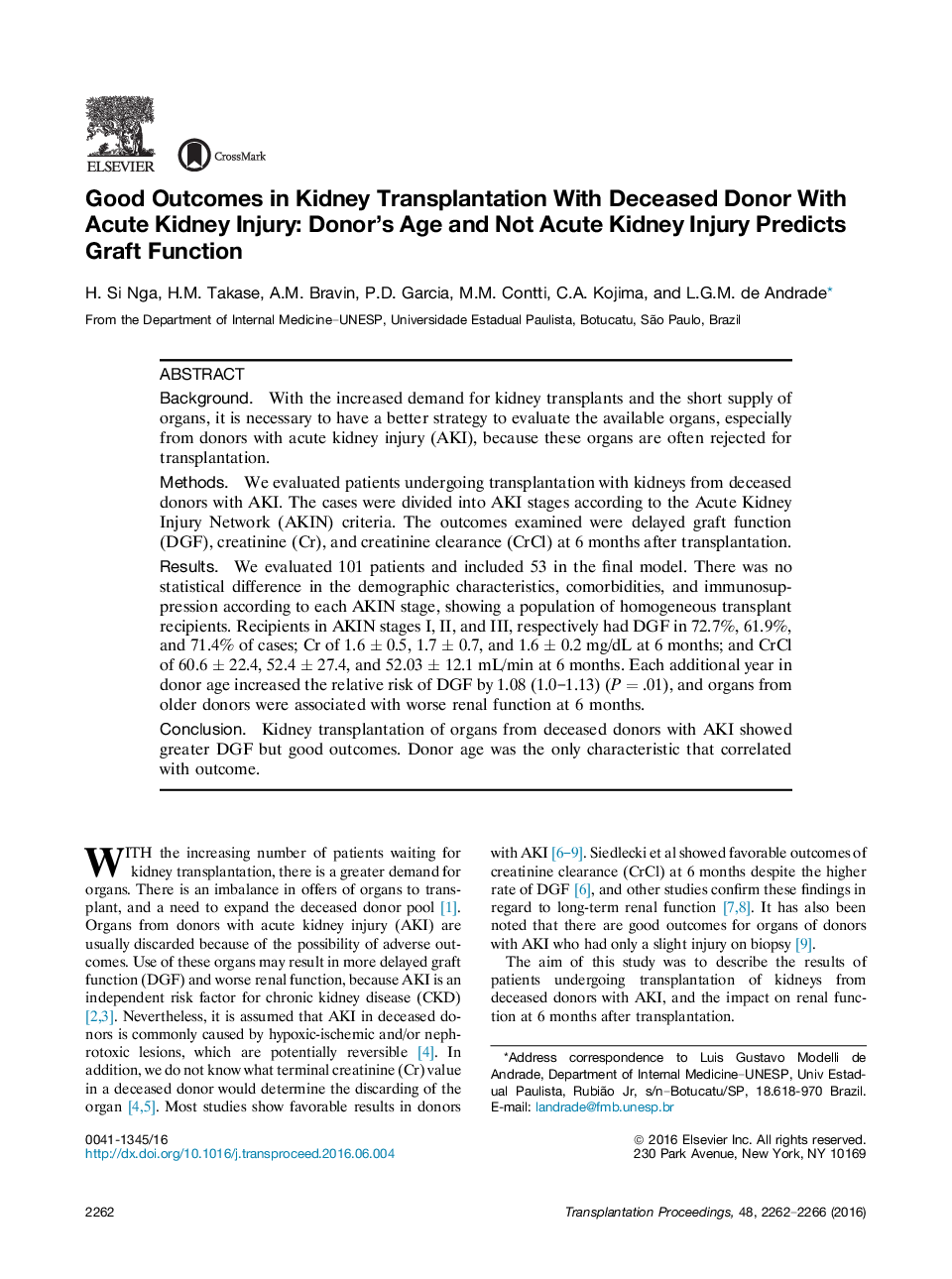| Article ID | Journal | Published Year | Pages | File Type |
|---|---|---|---|---|
| 5729344 | Transplantation Proceedings | 2016 | 5 Pages |
BackgroundWith the increased demand for kidney transplants and the short supply of organs, it is necessary to have a better strategy to evaluate the available organs, especially from donors with acute kidney injury (AKI), because these organs are often rejected for transplantation.MethodsWe evaluated patients undergoing transplantation with kidneys from deceased donors with AKI. The cases were divided into AKI stages according to the Acute Kidney Injury Network (AKIN) criteria. The outcomes examined were delayed graft function (DGF), creatinine (Cr), and creatinine clearance (CrCl) at 6 months after transplantation.ResultsWe evaluated 101 patients and included 53 in the final model. There was no statistical difference in the demographic characteristics, comorbidities, and immunosuppression according to each AKIN stage, showing a population of homogeneous transplant recipients. Recipients in AKIN stages I, II, and III, respectively had DGF in 72.7%, 61.9%, and 71.4% of cases; Cr of 1.6 ± 0.5, 1.7 ± 0.7, and 1.6 ± 0.2 mg/dL at 6 months; and CrCl of 60.6 ± 22.4, 52.4 ± 27.4, and 52.03 ± 12.1 mL/min at 6 months. Each additional year in donor age increased the relative risk of DGF by 1.08 (1.0-1.13) (P = .01), and organs from older donors were associated with worse renal function at 6 months.ConclusionKidney transplantation of organs from deceased donors with AKI showed greater DGF but good outcomes. Donor age was the only characteristic that correlated with outcome.
